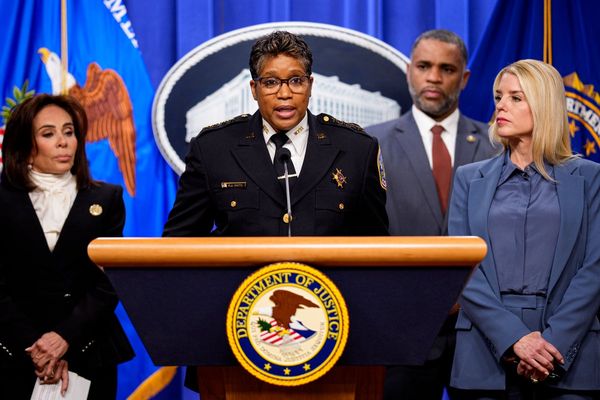
Analysts keep waiting for consumers to break for good. After all, they're battling the complex combination of relatively elevated inflation levels, 22-year rate highs, and the after-effects of a global pandemic.
Consumers have been the surprising but welcome backbone of the economic bounce back since COVID: they used up all their pandemic spending, then in a last hurrah this summer splurged the last of their remaining cash.
As Wharton professor Jeremy Siegel put it this summer, 'YOLO (you only live once) spenders' wanted to enjoy “the last good stretches for the economy before the summer ends and credit card bills come due.”
According to Brian Moynihan, CEO of Bank of America, that's yet to happen.
The Wall Street titan had previously warned that consumer spending was beginning to slow, but after a strong report following Thanksgiving, Black Friday and Cyber Monday—and with Christmas around the corner—Moynihan said the consumer remains in "pretty good shape."
Speaking to CNBC this week, Moynihan laid out that the 60 million American consumers BofA worked with had outgoings of $4.5 trillion. That was up 9% between 2021 and 2022 but began slowing this year.
However this past November, spending was up 4% compared to a year ago, signaling that although the consumer is beginning to slow down their overall spend, they're not broken for good.
Every major consumer spending window has also exceeded previous records, though not by such massive margins, he added: "Every case [has been] bigger than last year. So Cyber Monday, bigger than last year. Black Friday, bigger than last year. But 3.5%, 4% bigger. So, they’re records, but at a much more modest gain."
According to Adobe Analytics, which looked at all consumers, online spending during the five days from Thanksgiving to Cyber Monday was actually up 7.8% year-on-year, totaling $38 billion.
However, Christmas spend is likely to still be record-breaking but by a smaller margin.
The National Retail Federation forecasts that holiday spending will hit record levels during November and December, growing between 3% and 4% compared to 2022 to between $957.3 billion and $966.6 billion.
NRF President and CEO Matthew Shay said: “Overall household finances remain in good shape and will continue to support the consumer’s ability to spend.”
There are still coins in the piggybank
Although data did lead some experts to believe that cracks were beginning to show in consumers' coffers, Moynihan dug deeper into BofA's data to show that those lesions are marginal.
Fears of consumers running out of cash for good were first abated in October when revised government data found that American families had squirreled away billions more than previously reported.
The change hinged on how the Bureau of Economic Analysis accounts for income from mutual funds and real estate investment trusts—changes that came into play before the pandemic.
As a result, the pre-pandemic savings rate was revised down making the leap during COVID all the more extraordinary. The tweak prompted JPMorgan Chase to amp up their estimate of the savings buffer in October from $400 billion to $1.2 trillion.
Accompanying this unexpected boost to savings stockpiles is the fact that real average earnings are also still increasing at a rate outpacing inflation.
According to the latest data from the U.S. Bureau of Labor Statistics, real average hourly earnings increased 0.8%, seasonally adjusted, from October 2022 to October 2023.
"Consumers have money in their accounts," he said. "If you look at the people that took the money out of the consumer banking system [they] are the people who have discretionary funds that were getting no interest rate—and during the pandemic period put it in the market."
However, for those that sat in the bracket of having $5,000 to $10,000 in their account, their balances have come down only minimally.
Moynihan revealed that those in the $5,000 to $10,000 bracket have seen their balances decrease 4%, while between the $2,000 and $5,000 average, it has taken a "very modest" hit of just 1%.
Overall, Moynihan surmised, consumers are in "very good shape."
Headlines vs reality
Moynihan—a favorite of Berkshire Hathaway chairman Warren Buffett—went on to outline that consumers also have new credit options courtesy of their houses increasing in value, but that inflation woes in the news headlines are creating a distinction between perceived reality and consumers' behavior.
"That’s what you’re seeing in the tension between 'how I feel' versus 'what I do'. And how I feel is: 'I feel inflation, I’m reading everything is more expensive. What I’m doing, I’m going to concerts, I’m spending money on entertainment,'" Moynihan explained. Indeed, BofA observed a 7% year-on-year increase in entertainment spending for November.
Speaking as a hypothetical consumer, Moynihan continued: "I’m spending a little less money on goods because I bought all that stuff in the pandemic. I don’t need to buy it again. But I’m doing entertainment. I’m traveling more. And so the way consumers are spending money is leveling out. But all in all, in pretty decent shape."







